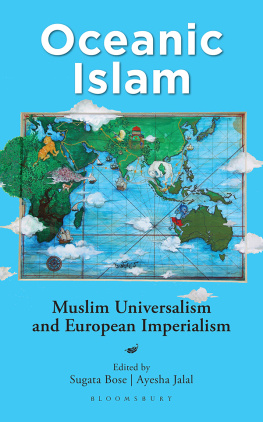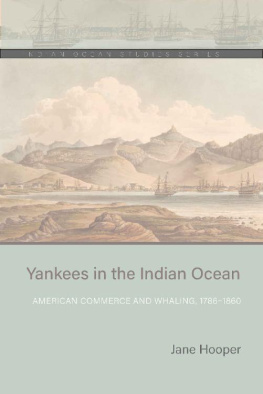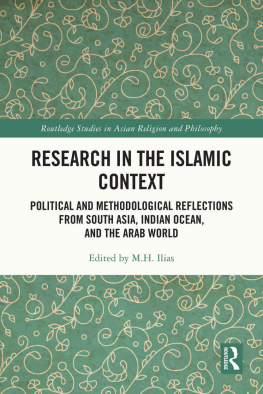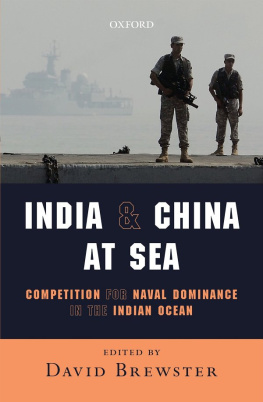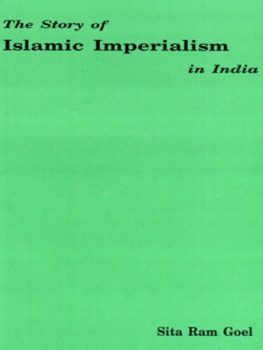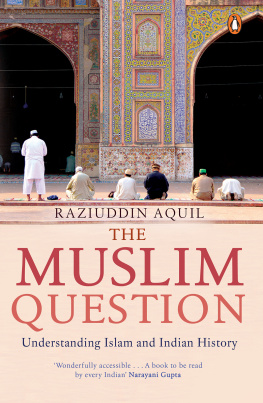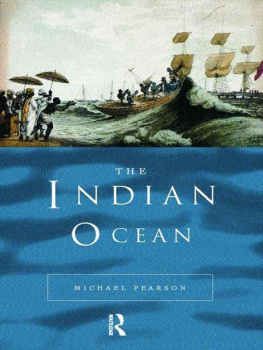Table of Contents


A miniature painting by Sehr Sayeed from the private collection of Sugata Bose and Ayesha Jalal
The couplets from Muhammad Iqbals Khizar-i-Rah, used in the painting

Dekhta Kya Hun Ke Woh Paik-E-Jahan Peyma Khizar
Jis Ki Peeri Mein Hai Manind-E-Sahar Rang-E-Shabab
There that world-measuring courier I had sight ofKhizr,
That ancient in whom youth's colours fresh as the daybreak dwell.
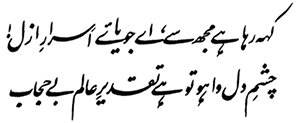
Keh Raha Mujh Se, Ae Joya'ay Asrar-E-Azal !
Chashm-E-Dil Wa Ho To Hai Taqdeer-E-Alam Behijab
Seeker, said he, of eternal secrets!
When the heart sees clear vision, the fates that rule earth wear no veil.
Oceanic Islam
Oceanic Islam
Muslim Universalism and
European Imperialism
Edited by
Sugata Bose and Ayesha Jalal

BLOOMSBURY INDIA
Bloomsbury Publishing India Pvt. Ltd
Second Floor, LSC Building No. 4, DDA Complex, Pocket C 6 & 7,
Vasant Kunj New Delhi 110070
BLOOMSBURY, BLOOMSBURY ACADEMIC INDIA and the Diana logo are trademarks of
Bloomsbury Publishing Plc
First published in India 2020
This edition published 2020
Copyright Sugata Bose, Ayesha Jalal 2020
Sugata Bose and Ayesha Jalal have asserted their right under the Indian Copyright Act
to be identified as Editors of this work
Bloomsbury Academic
An imprint of Bloomsbury Publishing Plc
All rights reserved. No part of this publication may be reproduced or transmitted in any form or by any means, electronic or mechanical, including photocopying, recording, or any information storage or retrieval system, without prior permission in writing from the publishers
Bloomsbury Publishing Plc does not have any control over, or responsibility for, any third-party websites referred to or in this book. All internet addresses given in this book were correct at the time of going to press. The author and publisher regret any inconvenience caused if addresses have changed or sites have ceased to exist, but can accept no responsibility for any such changes
ISBN: HB: 978-93-89714-27-2; eBook: 978-93-89812-49-7
2 4 6 8 10 9 7 5 3 1
Created by Manipal Digital
Bloomsbury Publishing Plc makes every effort to ensure that the papers used in the manufacture of our books are natural, recyclable products made from wood grown in well-managed forests. Our manufacturing processes conform to the environmental regulations of the country of origin.
To find out more about our authors and books visit www.bloomsbury.com and sign up for our newsletters
Contents
The Indian Ocean interregional arena is a space of vital economic and strategic importance characterized by specialized flows of capital and labor, skills and services, and ideas and culture. Islam, in particular, and religiously informed universalism, in general, once signified cosmopolitanism across this wide realm. This historical reality is at variance with contemporary conceptions of Islam as an illiberal religion that breeds intolerance and terrorism. The future balance of global power will be determined in large measure by policies of key actors in the Indian Ocean and the lands that abut it, rather than in the Atlantic or the Pacific. The interplay of multiple and competing universalisms in the Indian Ocean interregional arena is in urgent need of better understanding. This volume bridges the divide between sophisticated scholarly research and superficial public knowledge regarding this key web of human interactions. The essays compiled bring together the best academic scholarship on Islam in South Asia and across the Indian Ocean in the age of European empire to a wide reading public.
The essays have emerged out of a series of intensive lectures, workshops, and conversations at the Center of South Asian and Indian Ocean Studies at Tufts University. The Tufts Center has been especially well placed to take on this ambitious project. It is the only center in North America devoted to South Asian studies with an Indian Ocean scope. This has enabled it to creatively trespass the arbitrary area studies on boundaries that separated the subcontinent from its neighboring regions of the Middle East and Southeast Asia. Research and programmatic activities under its aegis have always imaginatively crossed the nation-states frontiers between India, Pakistan, Bangladesh, Afghanistan, and Sri Lanka. Its location within the Fletcher School of Law and Diplomacy has made it a natural meeting place of academics and practitioners. These advantages have been deployed to good effect in the execution of this book project.
All the contributors have presented their work at Tufts and have revised their essays in light of comments by the editors and other participants. As a result, this book of essays has a degree of intellectual coherence that is rare in collected volumes. Each essay is based on original archival research and, at the same time, offers an interpretation that is of general relevance to an understanding of Islam across the Indian Ocean.
This volume is a fresh contribution to Islamic and Indian Ocean studies alike, placing the history of modern South Asia in broader interregional and global contexts. It also refines theories of universalism and cosmopolitanism while at the same time drawing on new empirical research.
Sugata Bose and Ayesha Jalal
The influence of oceans has never been limited to the lands that abut them. Mediterranean civilization, Fernand Braudel observed, spreads far beyond its shores in great waves that are balanced by continual returnsWe should imagine a hundred frontiers, not one, some political, some economic, and some cultural. Tracing the connections between Europe and the Mediterranean, he pointed to a series of north-south routes, natural isthmuses that are still decisive influences on exchanges today: the Russian isthmus, the Polish isthmus, the German isthmus and the French isthmus. These represented four skeins of history, each tied more or less securely to the warm sea, the source of prosperity, but also linked to each other.
Historians exploring the ties between the South Asian subcontinent and the Indian Ocean in the early modern and modern periods have paid a great deal of attention to the ports and emporia that have dotted its coasts and littoral zones. There is an impressive body of scholarship on trade and culture in cosmopolitan port cities, such as Cambay, Surat, and Bombay, in different eras. The river routes of South Asia supplied the warp and woof that tied the continent to the ocean much in the same way as the land isthmuses of Europe.
The ports that have been the focal point of scholarly attention were doubtless venues for the expression of various forms of cosmopolitanism in which Islam was a key constituent element. However, these were urban settings where Muslims were in a numerical minority. The delta of the Ganga and the valley of the Indus emerged as the Muslim-majority regions of the subcontinent. Their articulation Even though these new technologies quickened the pace of global communication, technological determinism in defining an age misses the more significant shifts in the balance of global power. This was a period of a relentless European onslaught on the Islamic world and Muslim resistance against difficult odds on both the intellectual and political planes. While taking the vast seascape of the Indian Ocean as the canvas for scholarly inquiry, this introduction pays special attention to the river basins of the Indus and the Ganga that today straddle India, Pakistan, and Bangladesh and link them to the Arabian Sea and the Bay of Bengal. By choosing a large oceanic space transcending territorial nation-states as a capacious unit of analysis, and then training the spotlight on two regions in the north-west and north-east of the subcontinent on both sides of the partition lines of 1947, we seek to map new directions in comparative, connective, and border-crossing historical scholarship. A depth of understanding of the strands of Islamic universalism emanating from this complex interregional arena in the century spanning 1850 to 1950 may be of vital importance in addressing intractable contemporary problems facing the region and the world.

